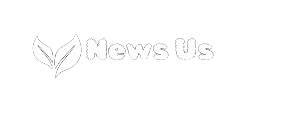From the unassuming embryo
Embryological similarities, embryology, evolution, vertebrate, phylogeny, ontogeny, developmental biology, comparative embryology
Embryological similarities, those striking parallels in the early stages of development across diverse species, offer a captivating window into the intricate tapestry of life to the complex organism, these shared features provide compelling evidence for the theory of evolution and illuminate the underlying unity of life.
The Enigma of Embryonic Development
Embryology, the study of developing organisms, has unveiled astonishing patterns. Vertebrate embryos, for instance, exhibit remarkable similarities in their early stages, showcasing structures like gill slits, a notochord, and a tail. These structures, while fully functional in fish, undergo modifications or disappear in other vertebrates as development progresses.
Unraveling Evolutionary Connections
These embryonic resemblances strongly suggest a shared ancestry. As organisms evolved, modifications were introduced, leading to the diverse forms Palestinian Territories Email List we observe today. The concept of “ontogeny recapitulates phylogeny,” though oversimplified, underscores the idea that the developmental stages of an organism reflect its evolutionary history.
Beyond Structural Similarities
Embryological similarities extend beyond mere physical structures. At the molecular level, genes and developmental pathways exhibit remarkable conservation. The same genes often orchestrate the formation of homologous structures in vastly different organisms, highlighting the underlying genetic blueprint inherited from common ancestors.
Modern Insights and Challenges
Advances in genetics and developmental Everything will take time and they need to change biology have deepened our understanding of embryological similarities. However, challenges persist. The complex interplay of genes, environment, and developmental plasticity adds layers of intricacy. Moreover, the concept of “evo-devo,” the intersection of evolutionary biology and developmental biology, continues to explore how developmental processes evolve.
Embryological similarities stand
As a testament to the interconnectedness of life. By studying the embryonic stages of diverse organisms, scientists. Gain invaluable insights into evolutionary relationships and the fundamental processes that shape life’s diversity. As research progresses, the field of embryology promises to unveil even more astonishing revelations about the origins and development of life on Earth.
Would you like to delve deeper into a specific aspect of embryological similarities, such as their role in understanding human development or the controversies surrounding the topic?












